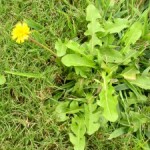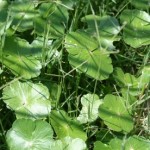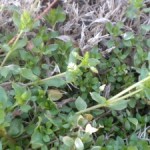Calculate Your School District’s IPM Budget and Pest Risk
Texas A&M AgriLife Extension school IPM extension specialists Mike Merchant and Janet Hurley have created an online IPM risk calculator to help schools estimate pest risk and IPM costs. The calculator includes an online questionnaire that leads the user through an IPM inspection, much like the inspection Hurley conducts when she visits a school.
After data from the inspection are entered, the calculator generates a “pest risk report card” with a letter grade from A to F. A graph indicates the top five possible sources of pest entry, food, water or harborage that need to be addressed, such as exterior garbage areas, external doors or windows.
“The calculator teaches you why each problem contributes to the pest problem,” says Merchant. “For instance, the distance of the dumpsters from the building can affect the proximity that rodents have to the doors. So it’s a teaching as well as a data collection tool.” A score is also given for each predominant pest in the area, such as rats, mice, cockroaches and mold, along with a comparison of the school’s score to the probability of each pest in that zip code.
The budget tool allows IPM coordinators to enter items needing repair or replacement, and cost per item. Because IPM costs can be higher initially and decrease over time, it is vital for school officials to get an accurate picture of long-term costs and benefits. The risk assessment tool can also be useful in identifying a pest problem area, what it will take to repair or fix the problem. The cost calculator can help determine what are physical repairs and costs, as well as identifying what are behavioral problems that will also need to be addressed.
AgriLife Extension expert: Proactive lawn weed control best bet
Proactive herbicide weed control for lawns is the key to remaining weed-free when the turf turns green in the spring, a Texas A&M AgriLife Extension Service specialist said.
The most important thing for homeowners when it comes to weed management is to have some predictability on what they may have problems with,” said Dr. Paul Baumann, AgriLife Extension state weed specialist.

Dandelions are a curse many lawn owners must deal with annually. The key to broadleaf weed control is being proactive, according to Dr. Paul Baumann, Texas A&M AgriLife Extension Service state weed specialist.
“That’s pretty easy because you can just think about what problems you have had in the past: grassy weeds such as grass burrs or crabgrass or broadleaf weeds such as dandelion or the purslanes or something like that,” he said. “And once we know that information, we can oftentimes take a preventative approach in terms of management.”
Baumann addressed a variety of weeds and control methods at the recent turf and landscape field day at Texas A&M University. Also presenting a new possible method of control was Jon Smith, a Texas A&M graduate student currently working for Scotts Miracle-Gro, who discussed a new Canadian bioherbicide for the organic-minded homeowner.
A primary part of any weed-management program is starting with a good healthy lawn, Baumann said.
“Do the things you need to help the grass grow,” he said, which includes proper fertility based on a soil test, insect control and disease control.
“Anything that weakens the turf makes it less vigorous and less competitive with whatever weeds that are going to come up or the survivability of weeds that have already come up,” Baumann said
“I always use the adage that you can’t fertilize your way out of a weed problem,” he said. “You have to do something remedial once you have the problem. But a good fertility program will minimize the need for a weed-control program, because our warm-season perennial grasses are very competitive and usually out-compete most of the weeds that might become an issue.”

Dollar weed is another broadleaf, but it is one of the tougher ones to kill, according to Dr. Paul Baumann, Texas A&M AgriLife Extension Service state weed specialist.
However, if weed control is needed, Baumann said there are many products available for the control of crabgrass, grass burrs, junglerice or goosegrass that can be applied in late winter or early spring, in time to activate before germination of those weeds in late spring or early summer.
“The key is a proactive plan to get those products on before the weeds become an issue in turfgrass – especially the grassy weeds,” Baumann said. “Grassy weeds are extremely hard to remove chemically from a grass crop once they are up. Your options are very limited, because you are trying to selectively kill a grass weed in a grass crop. Therefore, the use of a pre-emergence herbicide is the best choice for these weeds.”
However, he said, if broadleaf weeds are the problem, whether they are annual broadleaf weeds like slender aster or henbit, chickweed and burr clover in the winter time, that’s a whole lot easier fix.
There are a number of broadleaf herbicides that can be applied foliar in a remedial approach, Baumann said. A foliar application can take the weeds out of a turfgrass situation without hurting the grass, whether it is in a dormant period and the winter broadleaf weeds have shown up or during the summer growing season.
“Broadleaf weeds are really not an issue for us, with a couple of exceptions like the tougher ones to kill such as dollar weed, dichondra and Virginia buttonweed,” he said. “Then you are going to have to use some specific products and probably more than once.”

Chickweed is a winter time weed that is easy to control with a broadleaf herbicide, according to Dr. Paul Baumann, Texas A&M AgriLife Extension Service state weed specialist.
During the field day, Smith talked about a new product that is expected to be available for the natural or organic lawn owner.
The Canadian bioherbicide, he said, has been studied throughout the Midwest and North, and now in the South, to see if it is safe to use on warm-season grasses in Texas. The product is being developed by Scotts Miracle-Gro Co.
The herbicide is based on a naturally occurring fungus, commonly found in the environment, Smith said. It was discovered in Canada on thistles that were bleached white.
To develop the herbicide, the fungus is fermented on barley grain and then the granular product can be spread either on wet foliage or onto the soil for weed control, he said.
“Right now we are experimenting to see what weeds it works on,” Smith said. “We know it works on dandelions, clover, English daisy, and we are testing others.”
The herbicidal activity of this product leads to chlorosis of the leaves. After seven days, the leaves will begin turning white and by 14 days, they dry up and begin to disappear, with complete kill occurring at about 21 days.
“This is an experimental product that Scott’s has been working with for the past several years and has recently received registration with the Environmental Protection Agency,” Smith said. “It will appeal to those who like to use natural and organic products to control weeds.”

 .
.
Pingback: AgriLife Extension expert: Proactive lawn weed control best bet « Southern Region IPM News